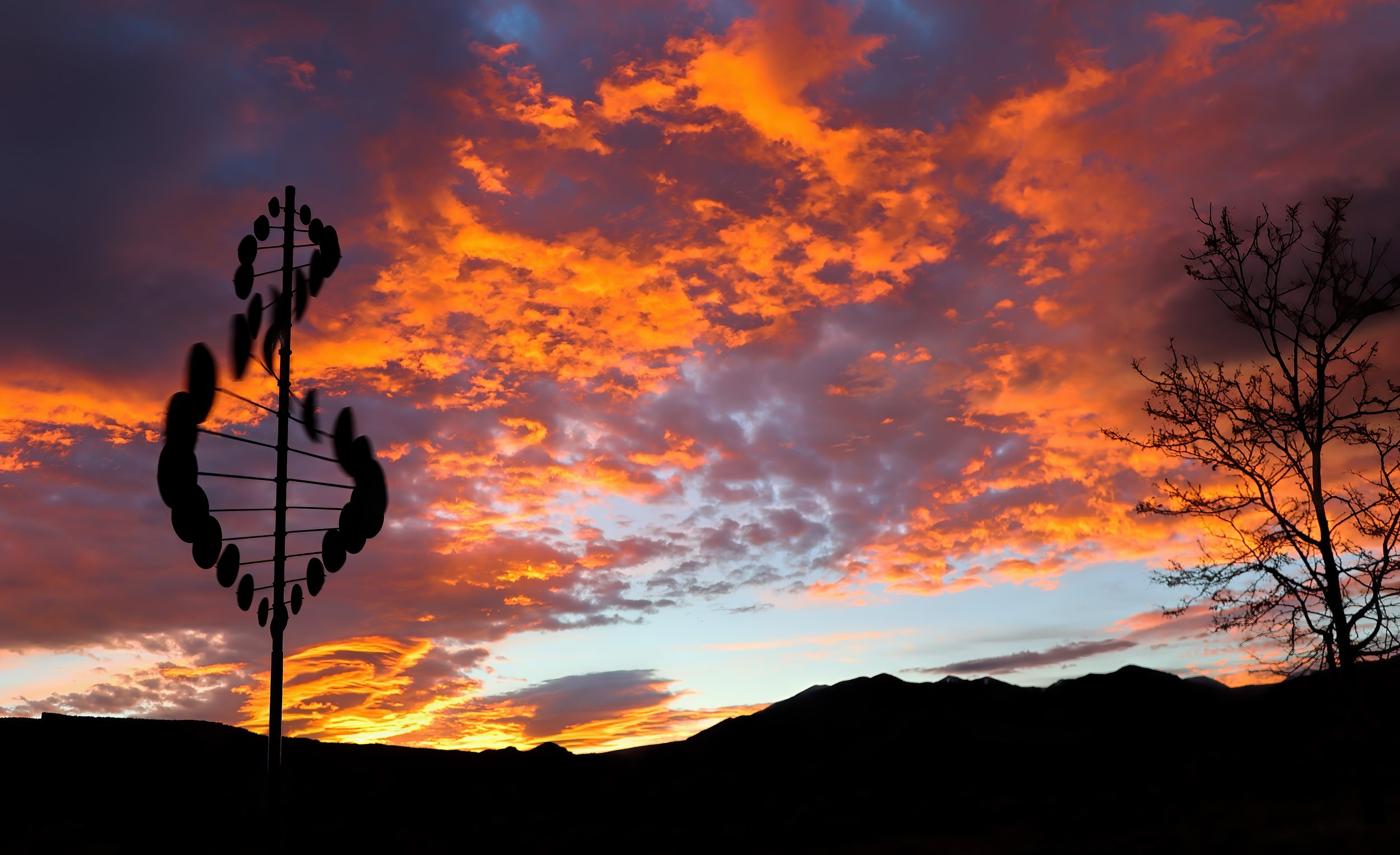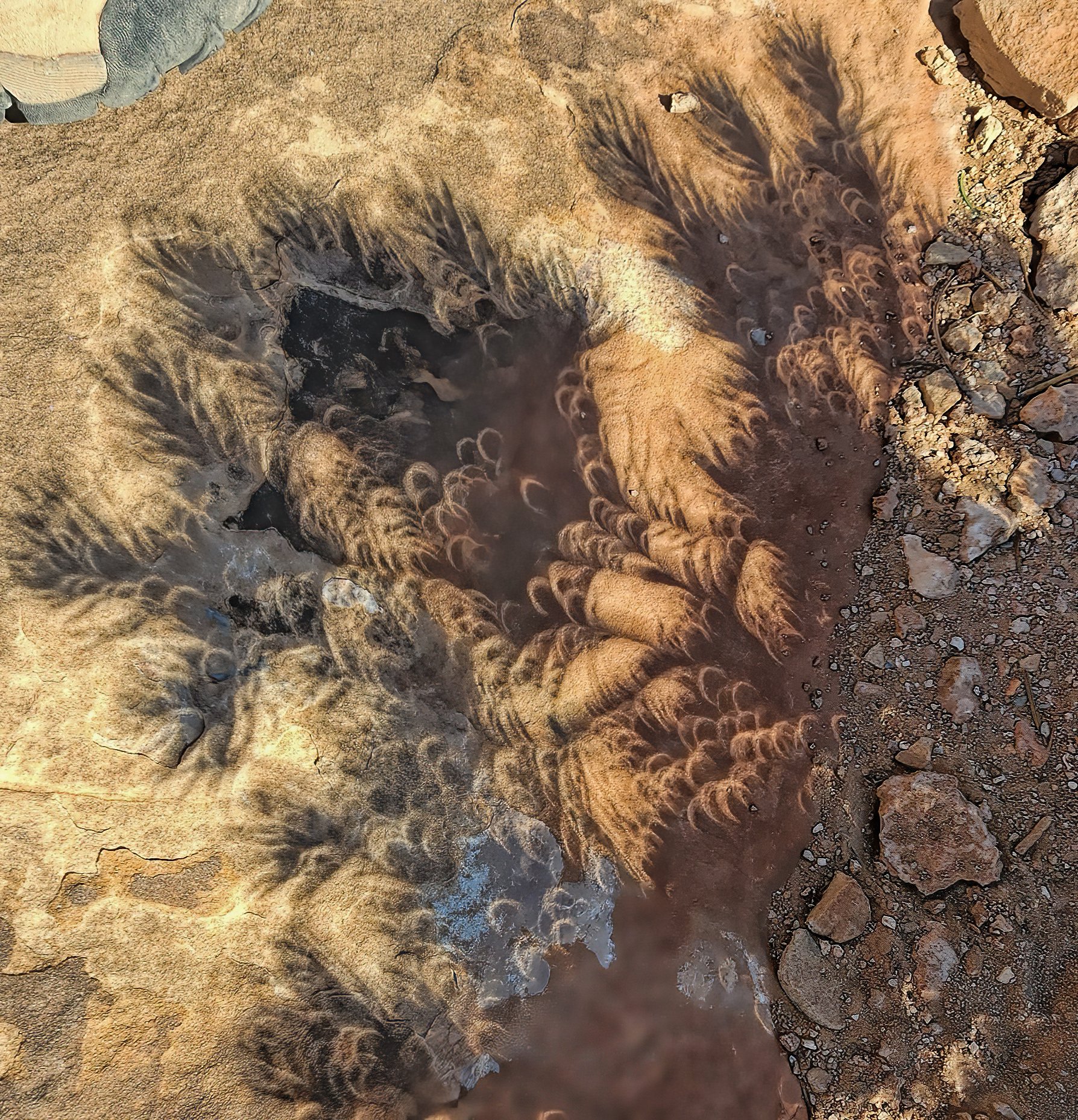in the brush for a breakfast morsel. This is a smart and determined bird.
Sharp-shinned Hawk (Accipiter striatus).
in the brush for a breakfast morsel. This is a smart and determined bird.

Sharp-shinned Hawk (Accipiter striatus).

rises behind, and nearly silhouettes, Castleton Tower at dusk this evening.
Click on image to embiggenate.

Twelve hours later, early the following morning, the full Beaver Moon sets behind Porcupine Rim.
the morning after the Thanksgiving holiday storm. Nine to 20 inches of snow is reported in the high La Sal Mountains.

visits the watering hole early last evening, artfully captured by the infrared trail camera.

Mule deer (Odocoileus hemionus).
in your diet. I’m glad to see that Bugs Buddy is getting his vitamins, minerals and fiber during his foraging around the house.

Desert cottontail (Sylvilagus audubonii).
likes to hammer on stucco and I hope it gets a splitting headache as it does so. It’s an attractive bird, though.

Northern Flicker (Colaptes auratus). More than 100 informal common names are known for this bird, including yellowhammer, clape, gaffer woodpecker, harry-wicket, heigh-ho, wake-up, walk-up, wick-up, yarrup, and gawker bird.
of the largest rocket ever launched, brought to humanity by SpaceX early this morning from south Texas. (Images below from the SpaceX webcast on X.)

Propellant loading underway of the Super Heavy Booster and Starship 25 with super-chilled liquid oxygen and liquid methane.

Successful liftoff! All 33 Raptor engines ignited with the capability of lifting 150 tons into Earth orbit.
Excellent slow-motion high resolution video of the launch: NASASpaceflight.
around the birdbath, caught by the ever-seeing trail camera. I’ve suspected as much since I have to refill the birdbath every morning with several gallons of water now that the irrigation system is turned off for the season.

Kit fox (Vulpes macrotis).

Mule deer (Odocoileus hemionus).
There’s also a heating element in the bath to keep it from freezing through the winter, so it’s a reliable water source for birds and other wildlife.
UPDATE 16 November 2023: They’ve become regular nocturnal visitors.


is one of my favorites, and here it is enjoying the birdbath this afternoon.

Western Bluebird (Sialia mexicana).

where there are countless finches and sparrows available on the fly-through buffet.

Sharp-shinned hawk (Accipiter striatus).

on patrol at my feeding stations this season. Here are the first shots I’ve managed to capture under horrible lighting conditions and through dirty glass, using my back door as a blind. I feel confident there will be many future sightings of this handsome bird through the winter ahead.

Sharp-shinned Hawk (Accipiter striatus).

was enjoyed by this skilled paraglider on this calm and lovely afternoon in Castle Valley. I was out cranking on my eMTB and caught these with my smartyphone.

Note the silhouetted climber rappelling the standard descent route on Castleton Tower, left of center.

on the trails and jeep roads in and around Castle Valley.

My neighbor on his eMTB can be spied near the center of this image.
dresses the high country in the La Sal Mountains in the wake of the first real winter storm of the season, with thee to six inches of accumulation being reported at the SNOTEL sites. It will be interesting to see what this winter brings after last year’s record breaker.
Click on image to enlarginate.
at sunrise this morning heralds big changes in the weather ahead. Time to batten down.

are beginning to aggregate in small herds in Castle Valley for the winter, and here’s a juvenile bedding down in the luminous brush.

Mule deer (Odocoileus hemionus).
ensures that a little extra heat will be released when burned in the woodstove later this winter, or so I’ve been led to believe.

is five days old and 22 percent illuminated. The low angle lighting along the terminator brings out landform details not seen during the full phase.

Note the bright sunlit central peak in Theophilus crater at the edge of Mare Nectaris, a 2 km high feature rising from the flat crater floor.
as captured from Muley Point, Utah during the morning of 14 October. One can clearly see the advantage of being on the centerline for these rare and amazing events.

Multiple exposures of the eclipse event from sunrise to early afternoon on Saturday. Exposures were combined using StarStaX software, and even though several shots are missing from the sequence, I’m very pleased with the results.

The annular solar eclipse as captured by my filtered 400 mm telephoto lens, compiled in a composite shot with Adobe PhotoShop.
UPDATE: Both weekly newspapers in Moab are running these images. A photographic double-header!
near the centerline was claimed at Muley Point on Tuesday by this determined correspondent, expecting other friends to join the camp later in the week. And indeed they did, and the astronomical show that followed on Saturday was grand.
Panorama from Muley Point, Utah at the southern end of Cedar Mesa, overlooking the San Juan River canyon and Monument Valley and Navajo Mountain, Arizona. (Click on image to enlarge.)

Our extraordinary perch at the edge of the escarpment. But watch that last step!

Happy eclipse viewers Saturday morning!

At work managing two cameras and a telescope during the several hour-long event under absolutely perfect weather conditions.

Optical projections of the partial eclipse phase on the ground, naturally filtered through the needles on a small pinyon pine tree.

The so-called “Ring of Fire” at near maximum annularity as seen on the back of my Canon EOS 5D Mark IV with a 400 mm telephoto lens with solar filter.

Monument Valley as dusk approaches as viewed from our eclipse camp.

There is nothing better than the warmth of a small fire and the company of good friends when camping in canyon country.

The Milky Way galaxy rising over the Navajo Indian Reservation from eclipse camp, the night before the big show.